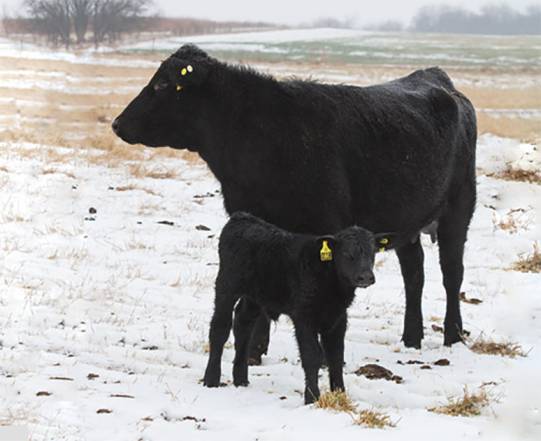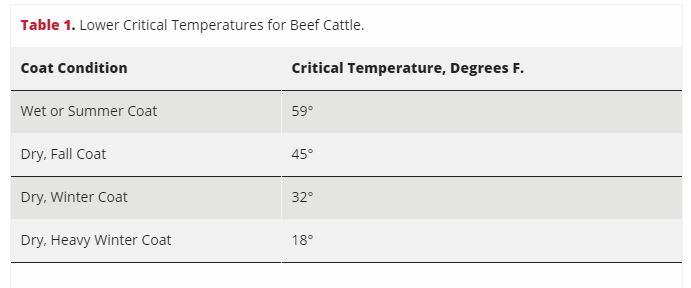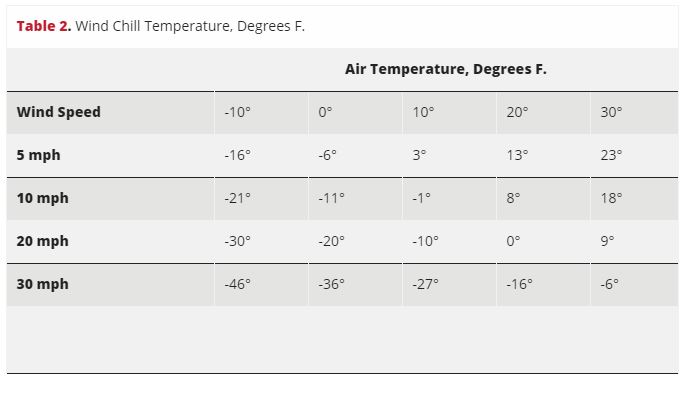Cold Weather Management Options For Cattle

Cold temperatures combined with wind creates more stress and increased management to achieve similar animal performance.
Lower Critical Temperatures
To understand when cold stress would start to occur, research has determined the lower critical temperature (LCT) based on hair coat (Table 1). When temperature drops below the lower critical temperatures based on the animal’s coat condition, the animal would be in cold stress.

Effective Temperature
Energy needs of animals are based on effective temperature. Effective temperature includes ambient temperature, wind, and humidity. Table 2 shows the influence of wind speed on the effective temperature that cattle experience.

Energy Needs
Cattle producers understand that the animal’s energy needs increase when temperatures drop. The general recommendation is for every degree that the effective temperature is below the lower critical temperature, the animal’s energy needs increase by 1%. For example, if the effective temperature is 1° Fahrenheit, the energy (TDN) needs of a cow with a dry heavy winter hair coat are 17% higher than they would be if the temperature was higher than the LCT.
What Are Some Management Options During Cold Stress?
Offer Wind Protection.
Man-made or natural wind protection is valuable in reducing wind chills and the negative effects of cold environments.
Provide More Energy.
Calculate the additional energy required to maintain the animal’s desired performance and provide it. How the additional energy is delivered can impact the digestive system of the animals. Caution: do not make any rapid diet changes.
- Substitute a higher TDN hay (which provides more energy).
- Higher digestibility feeds, such as better-quality forage, should be fed during severe cold so cattle can compensate somewhat for increased energy needs.
- If the cold temperatures are forecasted for an extended period of time, re-formulate the diet. This may result in the inclusion of grain within the ration.
- Determine protein content of diet, underfeeding protein can limit the animal’s ability to use the energy available in a given feedstuffs.
Sort Into Feeding Groups
Sort thin cows into a separate feeding group. Thin animals need more nutrients than cows in good body condition.
Supply Bedding
Bedding provides insulation from frozen ground.
Provide Ample Water
Water is critical to ensure adequate feed intake. If water availability is limited, feed intake will be reduced.
Provide More Feed
Voluntary feed intake is stimulated by colder temperatures. However, in windy conditions animals may have reduced intake due to reluctant to leaving the shelter areas. Table 3 shows the potential estimated intake increases due to changes in temperatures. Temperatures less than 5 degrees Fahrenheit can stimulate feed intake up to 125% of predicted intake; however, digestibility of diet can limit the animal’s ability to increase consumption.

Cold winter weather adds stress to animals and producers. Maximize animal nutrition and limit cold stress, both of which help producer’s bottom line.
This content and facts is from Drovers.com and SD State Extension.